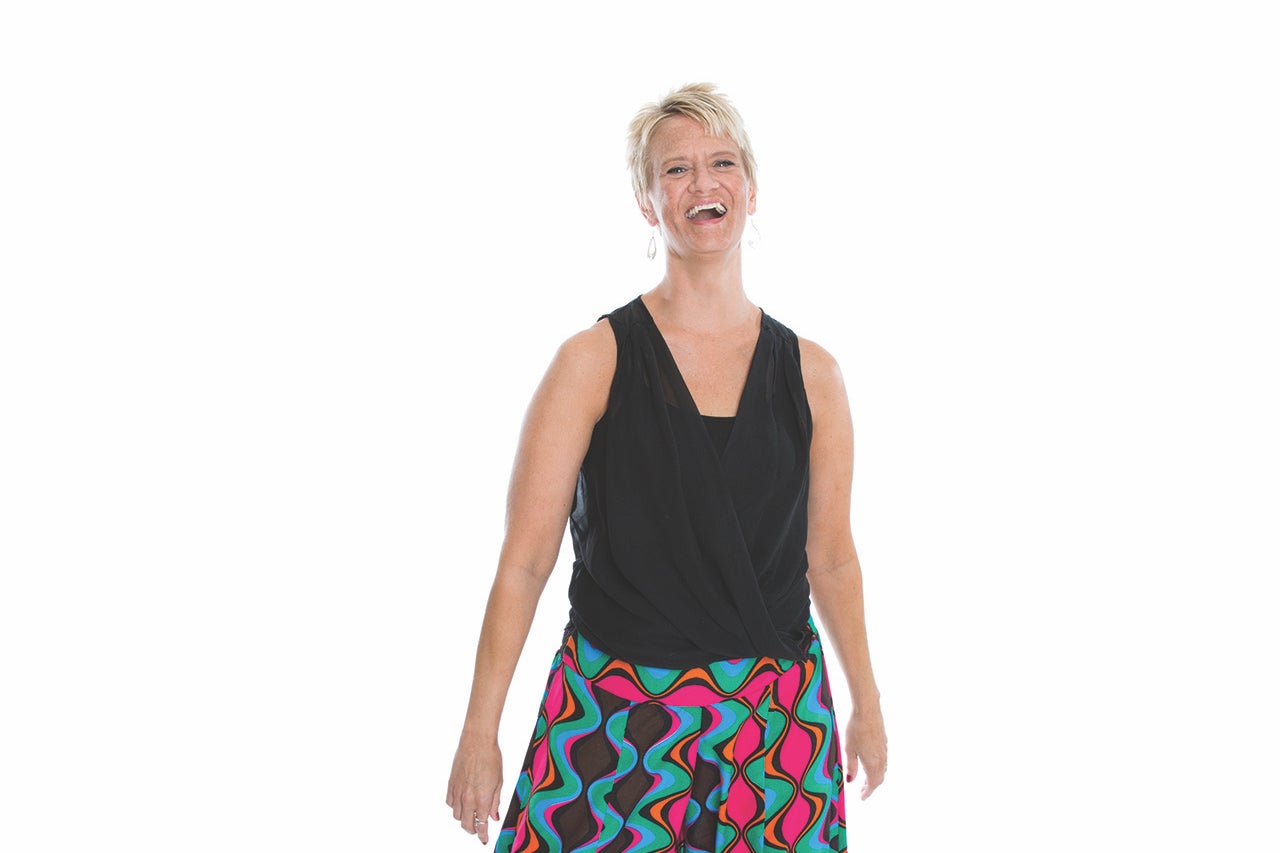Since 2007, theatre professor and director of the College’s dance program Gretchen McLaine has been teaching her students how dance plays a critical role in the liberal arts and sciences tradition. We sat down with her to discuss the intellectual components of dance, her favorite choreography and what gets her moving.
When did you start dancing? When I was 6, my doctor recommended ballet because of a hip displacement. I wore leg braces for the first two years of my life, but at 6, I was still tripping over my own toes. The doctor said that the external rotation would strengthen my hips, and as long as I didn’t aspire to become a professional dancer, I was fine.
Which dance first captured your imagination? Revelations by Alvin Ailey. The strength and beauty of the dancers, the traditional spiritual music, the stories of African American oppression and perseverance and the celebration of life. I first saw it on PBS in the 1970s and have subsequently seen it in person many times, and it always moves me to tears. It is so genuine and unapologetic. I remember telling my dad that I wanted to be an Ailey dancer when I grew up.
After many years of dancing, what do you still love about it? That it never gets old, and there’s never an attainment of perfection. Someone once said that ballet never gets easy, it just gets more possible. I also love that dance taps into our kinesthetic intelligence, makes you a creative problem-solver and gives you lots of practice in conflict resolution. It allows you to experience things from another’s perspective. Knowing firsthand how impactful dance can be to one’s personal and spiritual development, to communicating with others and developing empathy: These are some of the many reasons I love it.
Why is dance an important form of artistic expression? Well, if I could say it, I wouldn’t need to dance it. It allows for nonverbal communication. Any body can dance; a baby begins moving in the womb and the motion of your vital organs defines your life. Dance is so visceral. I think people are attracted to dance because it exposes our vulnerability. In dance, your body is the instrument of expression. I think that choreography is the most vulnerable of the art forms, which makes it simultaneously terrifying and exhilarating.
What Was your favorite dance to perform? I retired from the stage in 1999, and my favorite piece that I
ever danced was Echad mi Yodea, an excerpt from a larger work by Israeli choreographer and director of Batsheva
Dance Company Ohad Naharin. It is brutal: You throw your body around, jump on and off chairs repeatedly, throwing yourself to the floor in a series of repetitive phrases. It probably took five years off my performing career, but it was an amazing experience to perform the piece. My other favorite works to dance were by NYC-based choreographer John Zullo. I always found his dances to be very intellectually and physically challenging, but also incredibly fun and ultimately rewarding. I’m thrilled to bring him to the College as our guest artist this fall.
What emotion is hardest to convey through dance? Anything that is not real cannot be conveyed in your dancing. Modern dance icon Martha Graham is known for her credo, “movement never lies,” and there is so much wisdom in that statement. Dancing requires a deep understanding of the role, whether you are portraying a sylph, lover, demonic entity or another pedestrian. Great performers can have deficiencies in their technique, but if their commitment to performing is not there, the audience knows.
What is the most important body part for a good dancer? The brain. If you aren’t a thinking dancer, you
are boring to watch. Today, many choreographers want to engage in creative collaboration with the dancers, and they can’t do that if there is nothing there. One of the difficulties in performing is that you are supposed to make it look effortless, but inside your head, there is a mad dialogue happening and neurons are firing like crazy. And live performance means being able to creatively solve your own problems, often improvising the solutions without a second thought. Instinct and training take over, and the performance goes on.
What is the favorite object in your office? My poster of Vaslav Nijinsky from his ballet L’après-midi d’un faune (The Afternoon of a Faun). It was such a revolutionary ballet (1912); it caused riots in the theaters, but it ushered in a new age of ballet, fusing a new movement vocabulary with modernist art and music. It just reminds me of our dance lineage. Without Nijinsky, the entire trajectory of Western dance would be different. It is inspiring that one person can be the catalyst for change.
What music makes you break out in dance? Well, I’m actually a heavy metal aficionado, but you really don’t dance to that kind of music. And while I don’t really enjoy pop music, if one of my students plays some old school hip-hop, I might find myself moving with the music. But going to clubs and dancing – I truly despise that.
What is one thing you hope your students take away from their dance education? That dance
class is so much more than learning how to dance. It provides you with life lessons, ones that you will carry with you forever. It teaches you so much about yourself, your limits and your potential. I also want students to realize their uniqueness and to find their niche in the larger world. Do you know the saying, “dance like no one is watching?” Well, I tell them to dance like everyone’s watching, all the time, because you never know what opportunities come out of performing that simple classroom combination. Dance like it’s your last opportunity to dance on this earth, because you never know when it will be.





